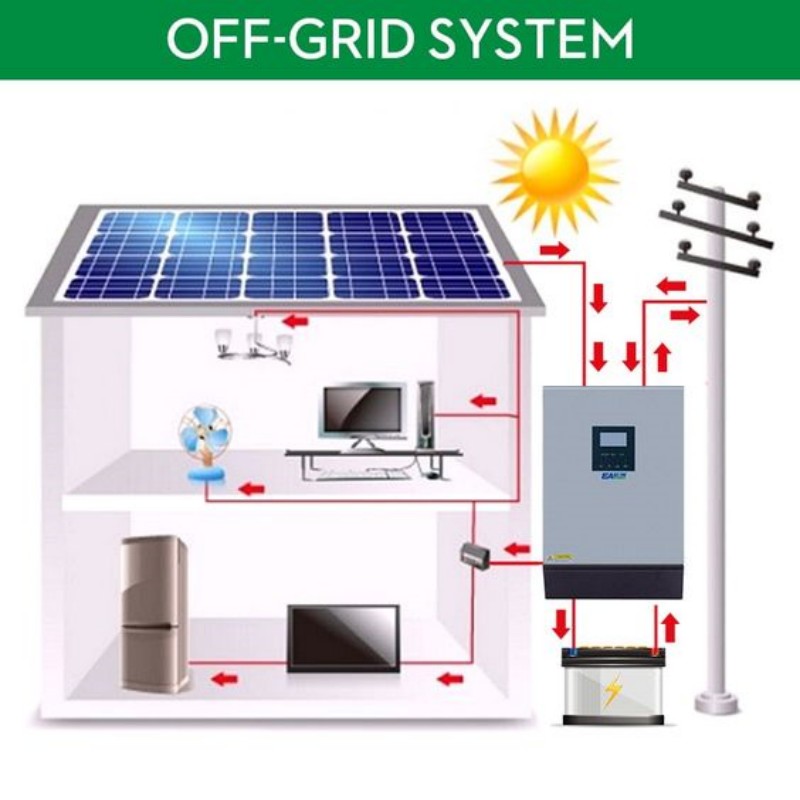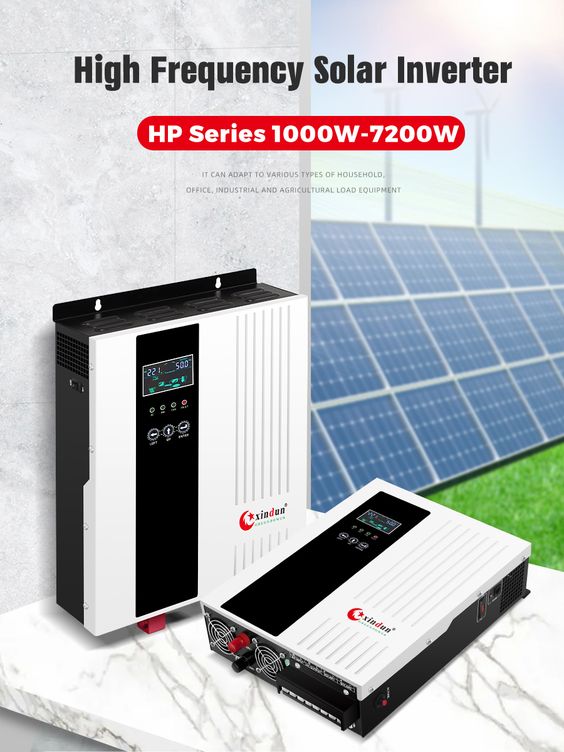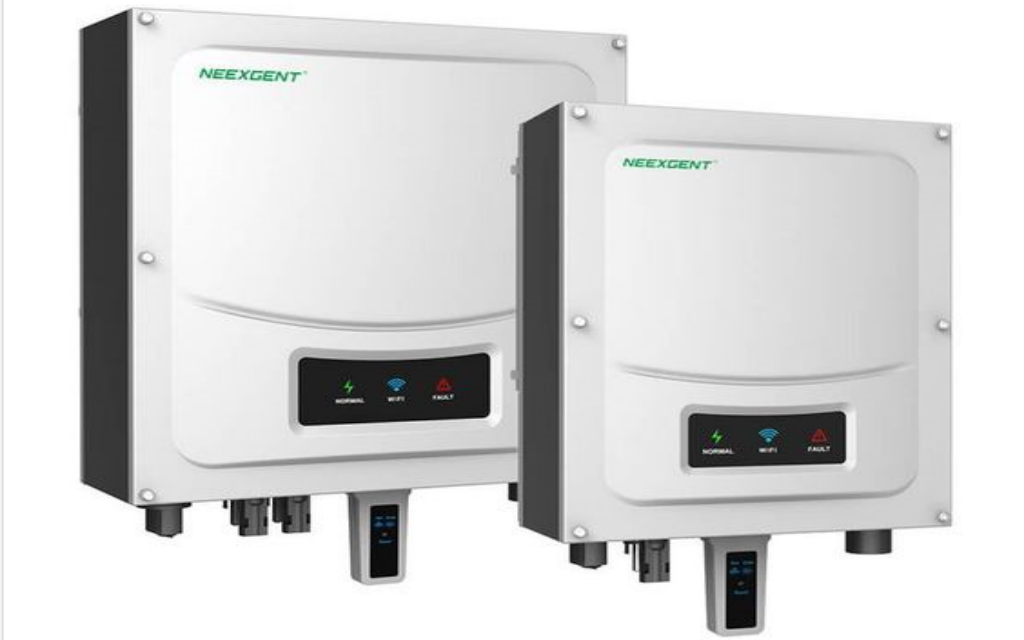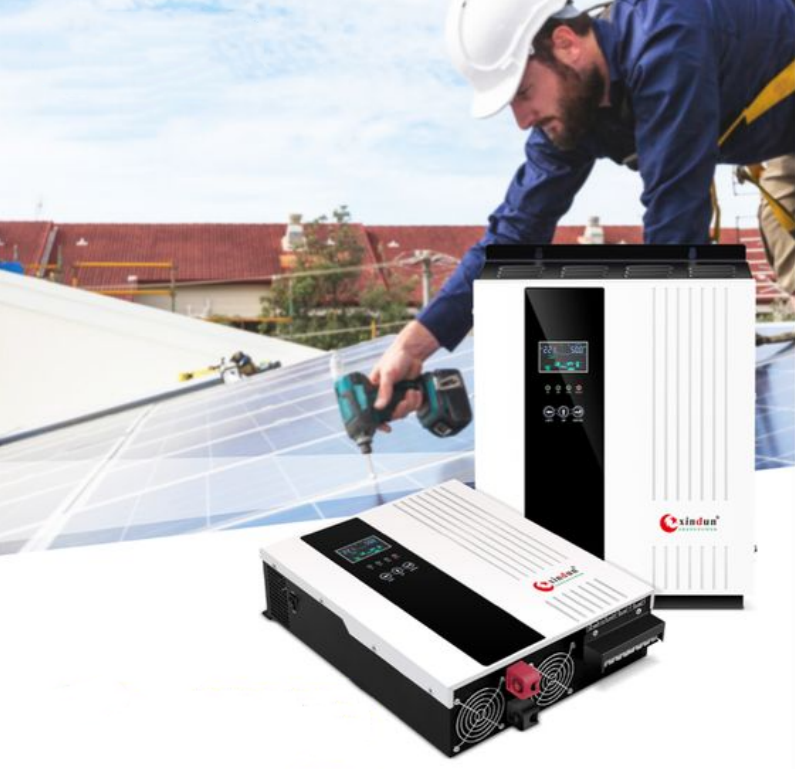The Power Behind Solar Energy: Exploring the Functionality of Solar Inverter
In a world driven by the need for sustainable energy solutions, solar power has emerged as a formidable contender. At the heart of every successful solar power system lies a crucial component - the solar inverter. Often overlooked, these unassuming devices hold the key to unlocking the true potential of solar energy. In this article, we delve into the functionality of solar inverters and uncover the power they possess. From transforming direct current (DC) into alternating current (AC) to optimizing energy production, solar inverters are the unsung heroes of the solar revolution. Join us as we explore the inner workings of these remarkable devices, shedding light on their role in maximizing energy efficiency and reducing carbon footprints. Whether you're a solar enthusiast or simply curious about sustainable energy, this article will illuminate the power behind solar energy and the invaluable role played by solar inverters.
Understanding solar inverter(What are solar inverters)
A solar inverter is the backbone of any solar power system, responsible for converting the direct current (DC) generated by solar panels into usable alternating current (AC) electricity. This transformation is essential as most appliances and electrical devices in our homes and businesses operate on AC power. Without solar inverters, the electricity produced by solar panels would be unusable, rendering the entire solar power system ineffective.
Solar inverters are designed to handle the unique characteristics of solar energy. They are capable of tracking and adjusting to changes in sunlight intensity, ensuring that the solar power system operates at maximum efficiency. Additionally, solar inverters play a crucial role in protecting the solar panels by implementing safety mechanisms that prevent damage from overvoltage, overcurrent, and other electrical anomalies.
Solar inverters come in various sizes and configurations, allowing them to be used in a wide range of solar power applications. From small residential systems to large-scale commercial installations, solar inverters are versatile and adaptable to different energy needs. The next section will delve into the inner workings of solar inverters, providing a comprehensive understanding of how these devices function.
How a solar inverter work(What are solar inverters)
A solar inverter employs advanced electronics to perform the complex task of converting DC power to AC power. The process begins with the solar panels capturing sunlight and converting it into electrical energy in the form of DC power. This DC power is then fed into the solar inverter, where it undergoes a series of transformations.
The first step in the conversion process is the inversion of DC power to AC power. This is achieved by the solar inverter's internal circuitry, which utilizes sophisticated power electronics to generate a stable AC output. The AC output produced by the solar inverter is synchronized with the grid frequency and voltage, allowing seamless integration with the existing electrical infrastructure.
In addition to the basic function of converting DC to AC power, solar inverters also offer advanced features to optimize energy production. One such feature is maximum power point tracking (MPPT), which allows the solar inverter to adjust the electrical characteristics of the solar panels to maximize their output. By continuously monitoring the output of the solar panels and adjusting the operating voltage and current, MPPT ensures that the solar power system operates at its peak performance, even in varying weather conditions.
Furthermore, solar inverters play a crucial role in grid-tied solar power systems. In these systems, excess energy generated by the solar panels can be fed back into the grid, earning credits or reducing the electricity bill. Solar inverters enable this process by synchronizing the AC output with the grid frequency and voltage, enabling seamless power flow between the solar power system and the electrical grid.

Types of solar inverters
Solar inverters come in different types, each with its own unique characteristics and applications. The choice of solar inverter depends on factors such as the size of the solar power system, the type of electrical load, and the specific requirements of the installation. Here are some common types of solar inverters:
String inverters:
These are the most commonly used solar inverters and are suitable for residential and small-scale commercial installations. String inverters are connected to multiple solar panels in series, forming a string. The DC power generated by the solar panels is fed into the string inverter, which converts it to AC power. String inverters are cost-effective and offer good overall system efficiency. However, they are susceptible to efficiency losses in case of shading or panel mismatch.
Microinverters:
Microinverters are installed on each individual solar panel, allowing for independent power conversion. Unlike string inverters, microinverters eliminate the effects of shading or panel mismatch, as each solar panel operates independently. This results in higher energy production and increased system reliability. However, microinverters are generally more expensive than string inverters and require additional installation time and complexity.
Power optimizers:
Power optimizers are installed at the module level, similar to microinverters. They allow for individual power optimization of each solar panel, mitigating the effects of shading or panel mismatch. Power optimizers work in conjunction with a central inverter, which converts the DC power from the power optimizers to AC power. This combination of power optimizers and a central inverter offers the advantages of both microinverters and string inverters, providing increased energy production and system reliability.
Hybrid inverters:
Hybrid inverters are designed for solar power systems that incorporate energy storage, such as batteries. These inverters allow for seamless switching between grid power, solar power, and battery power, depending on the availability and demand. Hybrid inverters are ideal for off-grid or hybrid solar power systems, where a constant and reliable power supply is required.

Benefits of using a solar inverter
The use of a solar inverter in solar power systems offers numerous benefits, making them an essential component of any solar installation. Here are some key advantages of using solar inverters:
Energy efficiency:
Solar inverters play a crucial role in maximizing energy production and system efficiency. By converting the DC power generated by solar panels into usable AC power, solar inverters ensure that every unit of solar energy is harnessed effectively. Additionally, features like MPPT enable solar inverters to optimize the output of solar panels, even in less-than-ideal conditions, further enhancing energy efficiency.
Grid integration:
Solar inverters enable seamless integration of solar power systems with the electrical grid. In grid-tied systems, excess energy generated by solar panels can be fed back into the grid, reducing electricity bills or earning credits. Solar inverters ensure that the AC output is synchronized with the grid frequency and voltage, enabling safe and efficient power flow.
System reliability:
Solar inverters incorporate various safety features to protect the solar panels and ensure reliable operation. These features include overvoltage protection, overcurrent protection, and ground fault detection. By monitoring and managing the electrical characteristics of the solar power system, solar inverters safeguard against potential issues and prolong the lifespan of the system.
Scalability:
Solar inverters are available in a wide range of sizes and configurations, allowing for scalability and adaptability to different energy needs. Whether it's a small residential installation or a large-scale commercial project, solar inverters can be tailored to the specific requirements of the application. This flexibility makes solar inverters a versatile choice for various solar power projects.
Environmental impact:
By harnessing the power of the sun, solar power systems reduce reliance on traditional fossil fuel-based electricity generation, resulting in a significant reduction in carbon emissions. Solar inverters play a vital role in this transition to clean energy by enabling the efficient conversion of solar energy into usable electricity. By utilizing solar inverters, individuals and businesses can contribute to a greener and more sustainable future.
Factors to consider when choosing a solar inverter
Choosing the right solar inverter is crucial for the optimal performance and longevity of a solar power system. Several factors should be taken into account when selecting a solar inverter:
- System size: The power rating of the solar inverter should be compatible with the size of the solar power system. Oversizing or undersizing the inverter can lead to efficiency losses and potential system issues. It's important to consult with a solar professional to determine the appropriate inverter size based on the system's capacity.
- Efficiency: Solar inverters have different efficiency ratings, which indicate how effectively they convert DC power to AC power. Higher efficiency inverters result in greater energy production and maximize the system's overall performance. It's advisable to choose inverters with high efficiency ratings to ensure optimal energy utilization.
- Reliability: The reliability of the solar inverter is crucial for the long-term operation of the solar power system. Look for inverters from reputable manufacturers with a proven track record of reliability and durability. Warranty terms and customer support should also be considered when evaluating the reliability of a solar inverter.
- Compatibility: Ensure that the solar inverter is compatible with the specific solar panels being used. Different solar panel technologies and configurations may require specific types of inverters. It's essential to check the compatibility requirements and recommendations provided by both the solar panel and inverter manufacturers.
- Monitoring and control: Some solar inverters offer advanced monitoring and control features, allowing users to track the performance of the solar power system in real-time. These features provide valuable insights into energy production, system health, and potential issues. Consider opting for inverters with built-in monitoring capabilities to keep a close eye on the system's performance.
Solar inverter installation and maintenance
The installation of a solar inverter should be carried out by a qualified professional to ensure proper and safe operation. Here are some key steps involved in the installation process:
- Site assessment: A site assessment is conducted to determine the optimal location for the solar inverter. Factors such as available space, ventilation, and access to electrical connections are taken into consideration.
- Inverter mounting: The solar inverter is securely mounted in the designated location. It's important to follow the manufacturer's guidelines and local electrical codes to ensure a safe and reliable installation.
- Electrical connections: The DC and AC electrical connections are made between the solar panels, inverter, and electrical distribution panel. These connections should be made according to the manufacturer's specifications and local electrical codes.
- System testing: Once the installation is complete, the solar power system is tested to ensure proper operation and performance. This includes verifying the AC and DC voltages, checking for any electrical faults, and confirming the synchronization with the electrical grid (in grid-tied systems).
- Maintenance: Solar inverters require regular maintenance to ensure optimal performance and longevity. This may include cleaning the inverter's cooling fans, checking for loose connections, and inspecting the overall condition of the inverter. It's recommended to consult the manufacturer's maintenance guidelines and schedule periodic inspections by a qualified professional.

Solar inverter installation and maintenance
Common issues with solar inverter and troubleshooting tips
While a solar inverter is generally reliable, occasional issues may arise that require troubleshooting. Here are some common issues and tips for addressing them:
- No power output: If the solar inverter is not producing any power output, check the DC and AC connections for loose or disconnected wires. Inspect the solar panels for any shading or damage that may be affecting their performance. If the issue persists, consult a solar professional to diagnose and rectify the problem.
- Low power output: If the solar inverter is producing lower-than-expected power output, it may be due to shading, module mismatch, or dirt on the solar panels. Ensure that the solar panels are clean and free from any obstructions. If shading is an issue, consider using power optimizers or microinverters to mitigate the effects.
- Error codes or fault indicators: A solar inverter is equipped with error codes or fault indicators that provide valuable information about potential issues. Consult the manufacturer's documentation or contact their technical support to decode the error codes and troubleshoot the problem.
- Overheating: Solar inverters can sometimes overheat, especially in hot climates or if they are exposed to direct sunlight. Ensure that the inverter is installed in a well-ventilated area and not subjected to excessive heat. If overheating persists, consult a solar professional to assess the situation and make any necessary adjustments.
- Inverter shutdown or tripping: In some cases, solar inverters may shut down or trip due to electrical faults or safety measures. Check the electrical connections and ensure that there are no short circuits or ground faults. If the issue persists, contact a solar professional to investigate and resolve the problem.
The future of solar inverter
As solar power continues to gain momentum worldwide, the future of solar inverters looks promising. Advancements in technology are driving the development of more efficient and intelligent solar inverters. Here are some trends that may shape the future of solar inverter:
- Smart inverters: Smart inverters incorporate advanced monitoring, control, and communication capabilities. They can communicate with the electrical grid and other devices, enabling grid stabilization, demand response, and improved system performance. Smart inverters also facilitate integration with energy management systems and enable remote monitoring and control.
- Energy storage integration: The integration of energy storage systems with solar power systems is becoming increasingly common. Solar inverters designed for hybrid systems are expected to play a crucial role in managing the flow of electricity between the solar panels, batteries, and the electrical grid. These inverters will enable enhanced energy independence, load shifting, and backup power capabilities.
- Increased efficiency: Ongoing research and development efforts are focused on improving the efficiency of solar inverters. Higher efficiency inverters will result in greater energy production and reduced system costs. Innovations in power electronics, such as wide-bandgap semiconductors, are expected to contribute to the overall efficiency improvements.
- Enhanced reliability: The reliability and durability of solar inverters will continue to be areas of focus. Manufacturers are investing in the development of robust and resilient inverters that can withstand harsh environmental conditions and provide long-term performance. Improved fault detection and self-diagnostic capabilities will further enhance the reliability of solar inverters.
- Integration with smart grids: The rise of smart grids presents new opportunities for solar inverters. Integration with smart grids will enable advanced functionalities such as dynamic grid support, voltage regulation, and real-time energy trading. Solar inverters will play an essential role in the seamless integration of solar power systems with the evolving electrical infrastructure.

